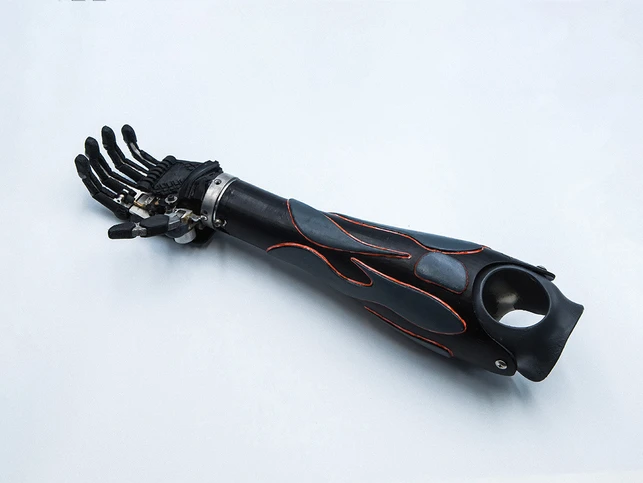Limb loss is a life-altering event that can have a significant impact on an individual’s physical and emotional well-being. Whether it is due to a congenital condition, trauma, or illness, the loss of a limb can present numerous challenges. This comprehensive guide aims to provide a thorough understanding of limb loss, including its causes, different types of amputations, preparation for limb ampuatation, and the importance of effective communication with surgeons.

Whether you have to personally experience limb loss or are seeking to support someone who has, this guide will serve as a valuable resource to navigate this complex topic. We are here to let you know that you have us to go through with you in this not-so-easy journey.
1. Understanding causes of Limb Loss
Limb loss can occur for a variety of reasons, ranging from congenital conditions to traumatic incidents. Here are some of the most frequent limb loss causes that people are experiencing:
- Traumatic amputation

According to John Hopkins Medicine, traumatic amputation accounts for 45% of all cases. It usually happens as a result of accidents from traffic vehicles, combat injuries, and mostly, from work-related accidents. It is especially common in developing countries where industrialization is growing, requiring more and more laborers to work for factories and most of the time, under very poor working conditions. After the accidents, some parts of the person’s limb are cut off or crushed badly or seriously burnt, which affects the blood flow and doctors have to amputate them to save their lives.
- Surgical amputation
Some diseases, especially Peripheral Artery Disease (PAD) and diabetes, which destroy your tissues by restricting your blood flow to carry oxygen to the cells in your limb and make your tissues gradually die or seriously affect blood circulation, can lead to a surgical amputation to control pain and a disease process for patients.
- Cancer-related amputation
Compared to the other 2 kinds of amputation, cancer-related amputation is not so common, however, some forms of cancer, such as bone cancer, can still require patients to cut off their hand, arm, foot, or leg to stop spreading cancer cells to other healthy tissues or body parts.
- Congenital amputation

When someone is born with a missing part of their limbs or the limbs are not formed correctly as they should be, it is called congenital amputation. There is no exact reason for causing it as we have several causes contributing to blood clots forming in the fetus. Most people choose to use a prosthesis or do other operations to rearrange the limb.
2. Exploring the different types of Limb Loss
Since there are several causes leading to an amputation, we have different types of limb loss, we also use the term “amputation level”, which is usually decided by doctors and the cause of amputation itself. These are the most common amputation levels:
- Below elbow amputation

Also known as trans-radial amputation, it is operated at the radius and ulna of the forearm. It significantly impacts a patient’s life as it involves the loss of the entire wrist and hand. This can limit the functions patients are accustomed to, but with myoelectric prosthetics that are offering more flexibility by responding to muscle signals from the remaining limb.
However, things are changing with the existence of myoelectric prosthetics, which allow the patient to do more activities flexibly due to the advanced program inside the myoelectric hand which can react to the movement signal from the muscle of the patient’s remaining limb. To find out what myoelectric hand is suitable for you, call hotline 028 66 53 07 37 or read Types of Limb Prosthetics.
- Above elbow amputation

When a patient’s hand is removed from the humerus, it is called above-elbow amputation. This type of amputation level usually happens as a result of accidents at the workplace. Though compared to below-elbow amputation, patients with above-elbow amputation have less function, it is still worth it for them to have prosthetic arms to support them in doing some basic activities in daily life. Vulcan Flex Hand now can be suitable for above-elbow amputation patients, too.
- Below knee amputation

Transtibial amputation involves the surgical removal of the lower leg, which can be a complete or partial removal, depending on the patient’s specific circumstances. Importantly, the knee joint is preserved in this type of amputation, maintaining function in the upper leg. This amputation level gives patients a better outcome when it comes to performing functions than above-knee amputation.
- Lower extremity amputation

It is also called transfemoral amputation, where surgeons have to cut through the femur, the large bone in the upper leg of the patient. Since this amputation level leaves a serious impact on the patient’s balance and how the patient will walk again, doctors usually take a certain time to plan and discuss with the patient or their family before operating.
3. Three phases of decision-making process
The decision-making process can take a short or long time depending on the patient’s condition and their willingness, however, it all comes to one point that it is not an easy decision. Based on our users’ experiences and our research, the amputation decision-making process includes three phases:
- Phase 1: This is when doctors announce to the person (and their family) that they have to cut a part or whole of their limb to stop pain and save life. All fear and pain are coming at once, they feel like they are losing everything: independence, confidence, relationship, occupation, etc. There are some questions below that usually come up in their mind at this stage. Losing a part of the body is an idea that they have never thought about so this phase is so hard to bear for both patient and family. Families and doctors are who have a great influence on their decisions to decide whether to amputee or not.
“How am I supposed to take care of myself?”, “How can I find a job and financially support my family?”, “What is my life without my limb?”, “How do I look after the amputation?”
- Phase 2: After the first shocking, frustrating, and sad state, they come to the reality that this operation is done to save them urgently. At this point, they start searching for how amputated people continue their lives after the operation, trying to figure out how their lives can become. If they agree to accept the amputation, finding out where to do the operation safely and professionally is the next step.
- Phase 3: Finally coming through the decision to cut off their damaged limbs, at this phase, they will look for information about prosthetic solutions that suit their needs, rehabilitation, and how to recover quickly.
4. Preparing for the amputation operation
- Mental preparation
The idea of one day waking up and realizing you do not have your limbs anymore is a cruel reality for anyone, therefore, limb amputation is considered a challenging and devastating event in people’s lives and emotions will be the most difficult to prepare. This journey requires a lot of strength, love, support, time, and money for you, your family, and your loved ones.
Here are some tips that you can follow to help you mentally prepare before the amputation
- Giving yourself time to address the fear and grieve your limb loss helps because these feelings are normal. Tell your family you know they are always here to love, and support and you will talk to them about these feelings when you are ready. In some cases, meeting the psychologist is also a good idea because they have some methods and resources to talk with you.
- Discuss with the doctors and ask them to describe and explain clearly about the operation, its necessity and outcomes to you and how other patients have come to this decision, this will make you clear about what you are going through and therefore, reduce the stress you are facing.
- Together with the family or someone you trust, gathering information that can tackle the concerns you are facing, making plans, and visualizing the future can help reduce uncertainty and get you gradually ready for the operation.
- Physical preparation
Consider taking some simple movement exercises. The point of doing this is to help your muscle retain its strength, which helps you a lot in performing other functions when using a prosthetic limb.
Try to sleep enough, we know this sounds unrealistic for someone who is experiencing a limb amputation but when you have adequate sleep, it can help reduce infection after the operation.
5. The importance of effective consultation and communication with doctors
It is very important that you effectively communicate with your surgeon team and health providers to understand clearly and deeply your situation so you can prepare yourself better for future rehabilitation. Most surgeons and health providers are more than willing to assist you and answer all of your concerns. Here are some questions that you may want to discuss with them.
- What type of amputation do I need to take and why?
- What is my amputation level?
- How is the operation going and details about it?
- How long is the recovery period?
- What does my stump look like?
- What is my rehabilitation and what is it like?
- What prosthetics are suitable for my limb?
- Is there any amputee community in where I live?

At Vulcan Augmetics, we have established a supportive Vulcan community where our users come together to share experiences and provide mutual support at every stage of their journey, from pre-amputation to adapting to the Vulcan Multi Grip Myoelectric Hand in their daily lives. Explore your options and take the first step towards a more empowered and fulfilling life, visit https://www.wearevulcan.com/



